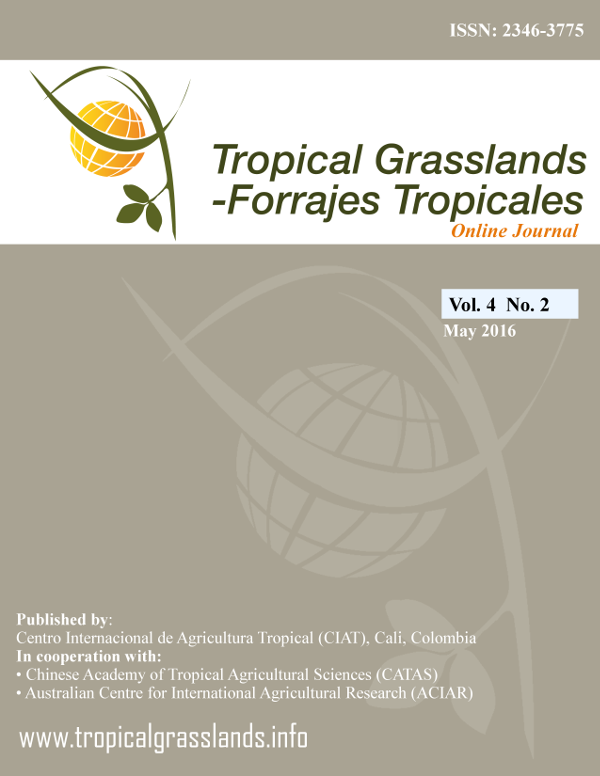Tillering of Marandu palisadegrass maintained at fixed or variable heights throughout the year
DOI:
https://doi.org/10.17138/tgft(4)101-111Abstract
Satisfactory tillering is the basic attribute to ensure stability and productivity of a grass population. We aimed to develop an understanding of tillering in Urochloa brizantha syn. Brachiaria brizantha cv. Marandu (Marandu palisadegrass) maintained at constant or variable heights during the various seasons of the year and to identify defoliation strategies that optimize tillering. In an experiment conducted in Uberlândia, Minas Gerais, Brazil, 3 defoliation strategies were studied: sward kept at 30 cm during the whole year (constant height); kept at 15 cm in fall/winter, 30 cm in spring and 45 cm in summer (increasing height); and kept at 45 cm in fall/winter, 30 cm in spring and 15 cm in the summer (decreasing height). The experiment was completely randomized, with 4 replicates. The following variables were evaluated: tiller appearance (TAR), mortality (TMR) and survival (TSR) rates; the balance (BAL) between TAR and TMR; tiller population stability (TPS); and number of tillers/m2 (NT). In winter and late spring, TAR and BAL were low, while in early spring, the sward with decreasing height showed high TAR, BAL and TPS. The NT was higher when managed with increasing height than with other height strategies.Lowering pasture height from 45 to 30 cm after the winter increased TAR in early spring. Grazing studies seem warranted to assess how these results can be reproduced under grazing and how pasture yield and quality plus animal performance compare with those under the fixed grazing height regimen.
Keywords: Defoliation, grazing management, pasture height, tillers, Urochloa brizantha.
Author Biography
Guilherme P. Silva, Universidade de São Paulo/ESALQ, Departamento de Zootecnia, Agronomia, Piracicaba, SP, Brazil.
Department of Animal Science
Doctorate Student




